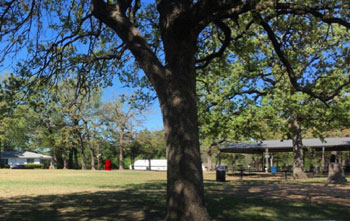
Three weeks ago, I took us on a walk of downtown Greenville with some of the western part of the city included.
No one reminded me that I had some wrong information, but I went back over the route last week. Much of that area is like it was when the buildings were first built. Some changes have been made, some deterioration, and some delightful alterations since I originally wrote the piece in 1991.
I neglected to note that the official front door of the courthouse is on Lee Street, an entrance that has been blocked in the last few years.
But let’s visualize walking down those steps and looking across the street. There is one new store with white letters on a black background. Very eye-opening! The grounds of the courthouse are mostly as they were before the building was built.
The gray monument in honor of World War soldiers I who lost their lives in the war is still there after being in storage during the construction of the courthouse in 1939. A cannon was located on the northside of the grounds as are two Texas Historical Markers. Another historical marker is located around the corner; a red granite piece erected in 1936 during the Texas Centennial.
Now let’s go back to where we started, cross Johnson Street and head north. As we look on our right there is another new business on the corner. In the historic Collins-Hilton Furniture is a delightful restaurant.
Across the street on the corner of Lee and Johnson streets is the old IOOF building that has been vacated in the last three weeks. Since it has been occupied since 1915, I suspect it will come alive when the pandemic finally leaves. I forgot about a treasure just north of the Odd Fellows building. It is one of my favorites. Punk McNatt built on the spot with what I call a “wedding cake” tower on the roof. It was an automobile dealership for years.
Cross the street and you are on city of Greenville maintenance sites. It was once a Coca-Cola bottling plant owned by the Alexander family for years. They sold their dealership and Mrs. Alexander remained in the lovely Southern mansion next door that looks like it should be in Charleston or New Orleans.
Most of the houses along Johnson Street were homes of railroad men, bookkeepers in business, small business owners in one of the oldest parts of Greenville. Somewhere on the right is an unpaved road leading to the first park in town. It was right on the edge of the Sabine River and frequently used until after the railroad came in 1880.
Not far north of the park the road divides; the right side going to Wolfe City and Commerce, and the left side up to Celeste. Just where the roads separate, the land is very low. Hence the name of the area “Wash Out.” At one time there was a small house with a lovely wrought-iron fence around it. The fence and gate have disappeared.
The old Bill Betts baseball field for schoolboys has also disappeared. Today, city trucks come in and out with materials to patch potholes. Over the little rise is a large house facing Graham Park. The house was once a sanitorium for drug and alcohol addicts in the late 1800s. Now the house is being renovated.
Across the street is Graham Park, still in use as it has been for more than 100 years. It was built to encourage citizens to visit the park on the streetcar. Behind the park is the roundhouse for the streetcar. It’s on the same spot but not open to visitors.
At Graham Park, turn left down Walnut Street. This was part of a housing development built by Doctor Sayle. After the arrival of the railroads in 1880, Sayle bought up a lot of land, turned it into a well-respected neighborhood, where many of the old homes are still intact.
At the intersection of Walnut and Lee streets on the southwest corner is a somewhat dilapidated red brick building that was the old Lee Street Methodist Church. Owners of the building want to renovate this historic site.
Not much has changed from Lee Street Methodist to the courthouse except for a tall beige brick building at the corner of Washington and Stonewall streets. Originally named The Washington Hotel, it was the social place for parties, conventions and elegant meals. That is until the Great Depression hit Greenville hard. But many businesses and homes recovered from the Depression as they will after the pandemic.
